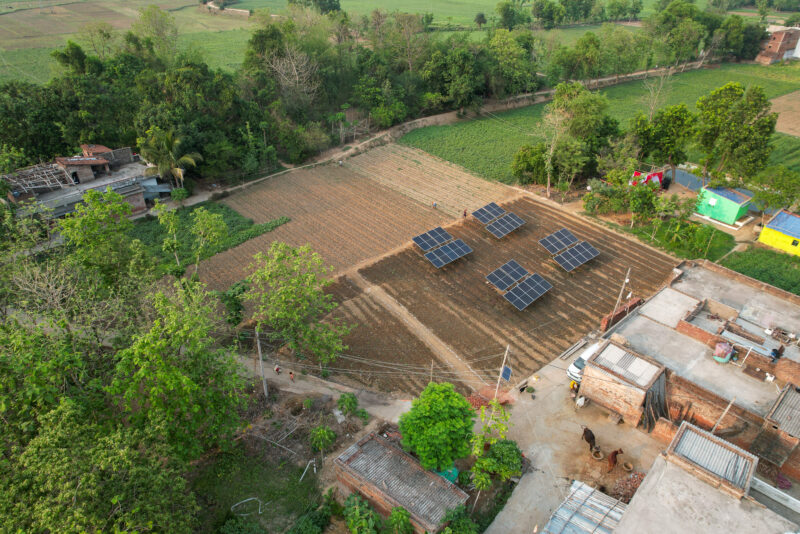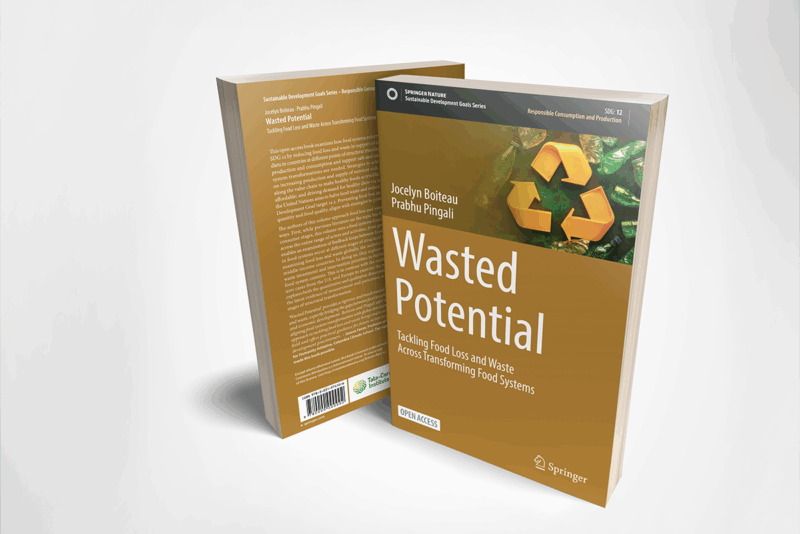Diversifying Farming in Chhattisgarh: What We Know About Agriculture in the State
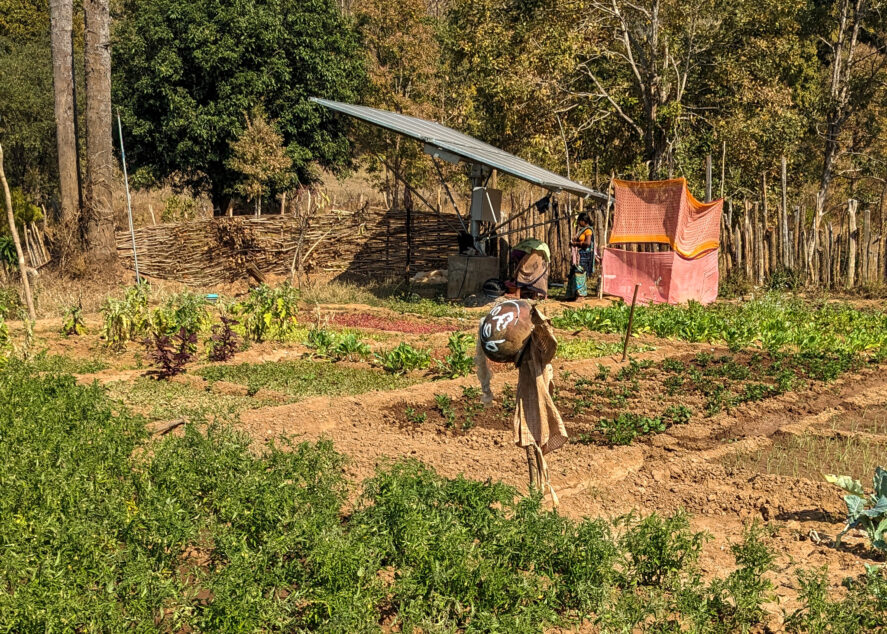
Rice is a cornerstone of Indian diets, where policies linked to the Green Revolution have helped it and wheat achieve dominance in cropping systems. But methane emissions from rice cultivation play a significant role in exacerbating climate change, and it relies heavily on groundwater irrigation during the non-monsoon seasons. Given these challenges, diversifying India’s agricultural system toward climate-smart and climate-resilient crops such as coarse cereals and pulses must be considered as a means of making the country’s food systems more sustainable.
An ongoing project at the Tata-Cornell Institute (TCI), Transformation of Agricultural Systems for Climate Resilience, looks to find pathways for diversifying agriculture away from rice. The study is set in the central Indian state of Chhattisgarh, which is often referred to as the “rice bowl of India.” The state has seen a steady rise in paddy cultivation, production, and procurement over the years, at the cost of a marked reduction in cultivation of pulses, millets, and oilseeds. The combination of historical patterns of cultivation and consumption of coarse cereals and pulses, together with the rising dominance of paddy, make Chhattisgarh fertile ground for exploring the potential for diversification.
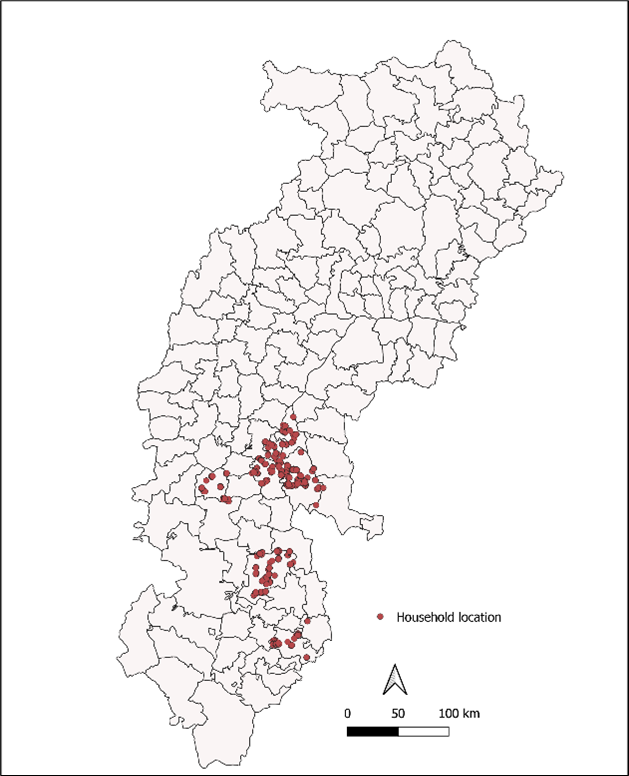
The distribution of households participating in the Transformation of Agricultural Systems for Climate Resilience study.
A central part of the project is a randomized control trial operating in 80 villages from four districts of Chhattisgarh. The 80 villages are divided into three treatment arms of 20 villages each, plus one control arm consisting of 20 villages. The trial is assessing the impact of three groups of interventions implemented by partner organization PRADAN:
- Education and awareness: Providing farmers with timely information on climate change impacts and promoting sustainable agricultural practices through trainings and workshops.
- Market access: Enhancing market opportunities by connecting small farmers with high-quality inputs—seeds, fertilizers, and manures—along with post-harvest processing facilities to strengthen access to agricultural value chains.
- Irrigation infrastructure: Developing sustainable, community-based irrigation systems to support the cultivation of non-paddy crops, particularly in upland areas that are currently underutilized. This includes promoting water-harvesting structures, such as farm ponds and solar lift-irrigation systems, to improve water availability during the dry season.
Preliminary survey insights
At the start of the study in June 2023, a baseline survey was conducted across 80 villages to learn about the socioeconomic landscape of the study region. Here’s what the results tell us:
Demographics
Approximately 65% of surveyed households belong to Scheduled Tribes. A significant portion has limited education (43% with no education).
Landholding patterns
Most farmers are marginal (53%) or small (27%). The average landholding is 1.53 acres for marginal farmers and 3.44 acres for small farmers.
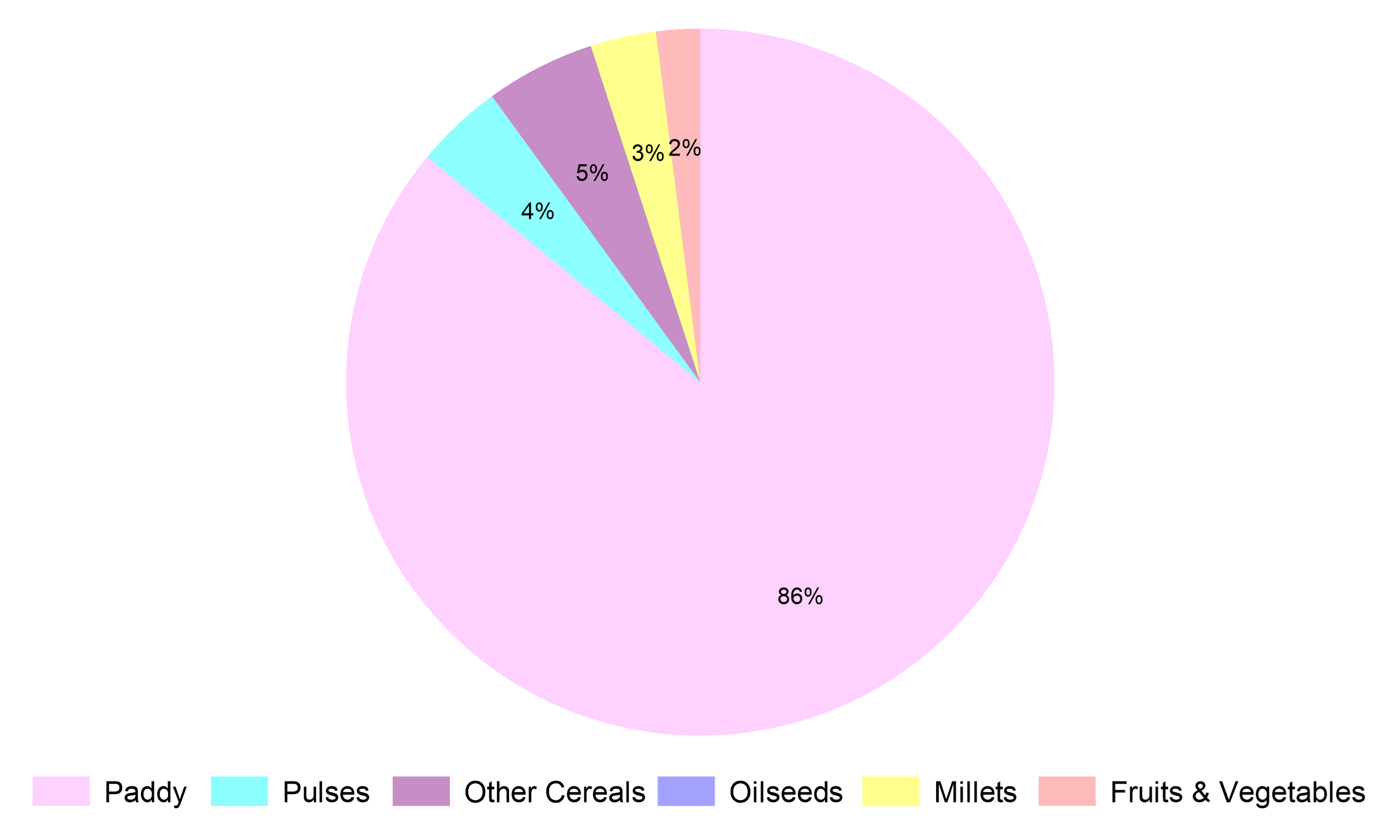
Cropping patterns in the study area, as measured by percentage of gross cropped area.
Cropping patterns
During Kharif, rice is the dominant crop at 85% of the gross cropped area, and most cultivation is rainfed. In the winter and summer seasons, cultivation is marginal but irrigated, with rice getting most of the irrigation in these seasons.
Elevation and cropping
Given the dearth of irrigation facilities in the region, paddy is predominantly grown in the lowland areas where rainwater can stand during the monsoon season. We find that, despite having lower average land sizes (0.59 acres), uplands exhibit considerable diversity in cropping patterns but are mostly left fallow during the monsoon season. In the uplands, less than half of the land is dedicated to paddy cultivation, with significant portions allocated to pulses (18%) and millets (15%). Additionally, wheat and maize account for 15% of upland cultivation. One of the pillars of our project is to increase diversification and farm incomes by encouraging non-paddy crops in the upland and during the winter.
Marketing
Paddy is entrenched in the region’s production system in part because of the government’s intervention as a major buyer at the pre-announced minimum support price (MSP). Given the limited availability of private markets in this highly underdeveloped region, we found that farmers primarily sell rice to the government during the Kharif season and rely on commission agents and local markets only in the Zaid and Rabi seasons, when production is low. The local markets are also the main avenue of sale for non-paddy crops.
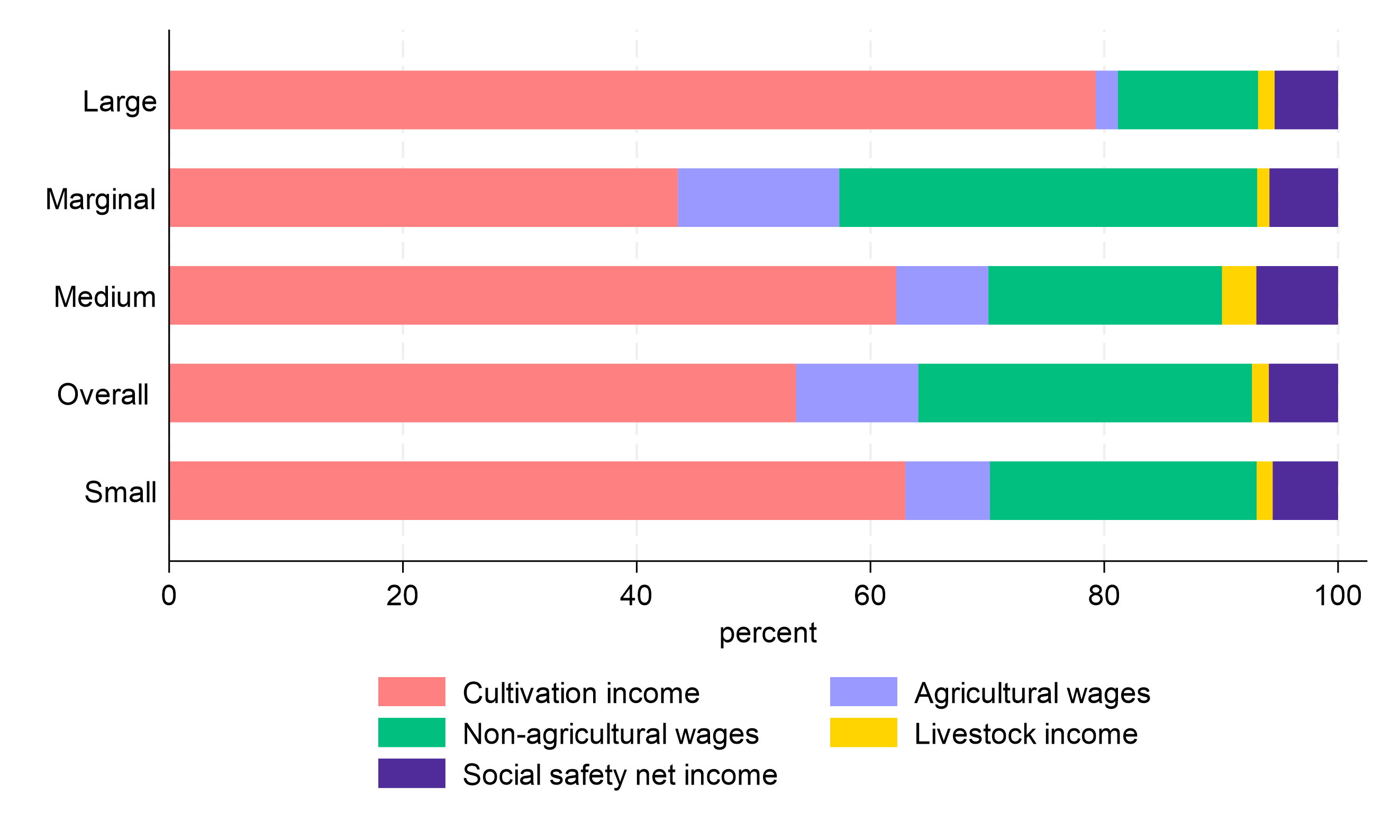
The share of various sources of total income by landholding class size.
Costs
Fertilizers and seeds contribute significantly to the costs incurred by farmers across seasons. Quality seeds for many non-paddy crops are difficult to obtain. We are providing access to natural and organic fertilizers, along with seeds, as part of an input market intervention to encourage production diversification.
Dietary diversity
In smallholder households with limited market access, what is grown is also consumed within the household. Cereals—primarily rice—are the most consumed food group, owing to their widespread availability and affordability, while millets are consumed by fewer than 40% of the population. Close to half of households consume some kind of vegetables, but fruits are only consumed by 22%. Oils are consumed by almost all households, since they are used for everyday cooking.
Going forward
Our baseline study confirms certain facts regarding agriculture and dietary practices in the region—monsoon paddy is ubiquitous and the crop is highly concentrated in the lowlands and midlands, whereas the uplands are far more diversified. It also sets the context for the communities involved in our project—mostly smallholder, tribal farmers who rely on rainfed agriculture and need support to diversify their cropping patterns and improve their livelihoods and dietary habits.
Our recently concluded midline survey will show us the short-term changes in agricultural production our project has potentially caused. The lessons that we draw from these results will be crucial in contributing to the growing policy discourse on diversification and climate-smart agriculture.
Aishwarya Gawali is an associate researcher at the TCI Center of Excellence in New Delhi, India.
Pallavi Rajkhowa is an associate research fellow at the TCI Center of Excellence in New Delhi, India.
Andaleeb Rahman is a research associate at TCI.
Featured image: A scarecrow watches over a small field of crops in Chhattisgarh. (Photo by Raghav Puri)



